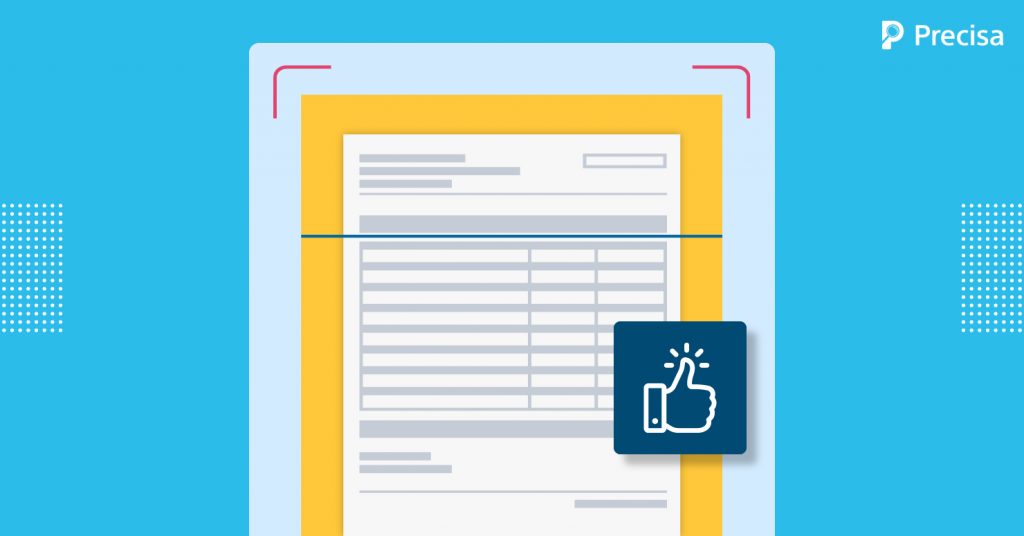Is Bank Statement Analysis (BSA) the Best Tool to Identify Customer Behaviour?

Bank Statement Analysis plays a crucial role in loan sanctioning. It is one of the practical ways to study the financial behaviour of the loan applicant. It gives a comprehensive picture of the customer’s economic history consisting of available balance, deposits, withdrawals, interest, service charges, penalties, overdrafts, and so on needed to vet the creditworthiness of the applicant.
Let’s take a look at why lending institutions must assess financial behaviour before loan sanctioning.
Why Lending Institutions Need to Assess the Customer’s Financial Behaviour
The lending business has, over time, gained significance and has become a full-fledged industry. The global lending industry is predicted to increase at a compound annual growth rate (CAGR) of 14.8%, from $6036.37 billion in 2020 to $6932.29 billion in 2021.
Growth in demands, as is expected, will usher in an influx of defaulters as well, and no lender wishes to enter into a relationship with someone with a bad credit history. Therefore, banks and NBFCs devote a significant amount of resources to determine if a borrower is creditworthy.
Institutions, therefore, undertake bank statement analysis to determine a borrower’s creditworthiness through their financial behaviour in the past. Assessing the financial behaviour is a tedious task and requires scrutinising every minute detail on the bank statement. However, it is reflective of how comfortably the customer would be able to repay the loan.
In addition, the customer’s bank statement reveals insights about his financial position, his cash flow management and even his spending — habits the banks and the NBFCs need to know to assess whether they should grant the loan or not. The financial behaviour of the customer helps institutions gauge the repaying intent and the mindset of the borrowers. It is a source for credit markets to gain confidence in lending large sums of money.
Why Is Bank Statement Analysis the Best Way to Identify Customers’ Behaviour
Lenders undertake bank statement analysis of their customers to gain an insight into the past six months of transactions before sanctioning a loan. The account summary and transactional information are the two primary elements of a bank statement’s format.
Lenders observe financial behavioural patterns at a glance and assess whether the borrower is a good fit for lending or not. The loan is only granted if the lender feels that the borrower can meet the loan repayment.
Here’s how Bank Statement analysis helps lenders reach their decision:
1. It provides a thorough report of the customer’s financial health
A bank statement analyser examines the data and converts it into easy-to-read pdf reports that provide essential insights. Such insights shed light on the borrower’s recurrent transactions, income and frequency, repayment capacity, loans and defaults, and so on — factors that contribute to his wealth management behaviour.
All these factors are essential to assess the customer’s financial summary, and the bank statement analysis dives right into the minutest details to provide a report.
2.It provides accurate credit ratings to evaluate the customer’s creditworthiness
While a thorough report helps lenders analyse the customer’s financial health, an overall credit score based on that report further eases the decision-making process for the lenders. A bank statement analysis helps lenders derive a score based on the customer’s credit history.
3. BSA helps lenders extract bank statement data to give scorecards to borrowers based on repaying capacity
A credit score reflects the customer’s creditworthiness, computed after taking red flags and other indicators into consideration. It also helps derive a volatility score that considers the daily average and tells the lender how risky the customer can prove to be when granting the loan.
4. It helps identify red flags during the process
The applicant’s intent to repay the loan is an integral factor in assessing the person’s financial behaviour. Lending is a risky business, and lenders need to identify and mitigate risks based on studying the customer in and out.
A bank statement analysis is a perfect tool for doing that — it helps surface the potential risks of extending credit to the borrower. It reflects all the red flag events such as non-payment or defaults, insufficient funds or bounced cheques. The bank statement analysis provides a comprehensive real-time report that ultimately helps make sound decisions based on its informative insights.
5. BSA helps derive customer’s spending patterns and detect circular transactions
Identifying red flags is not enough to assess the borrower’s overall financial behaviour. It is essential to derive a pattern of his spending habits to get a fair idea of an individual’s wealth handling system.
A bank statement analysis helps in detecting the borrower’s transactional pattern. It also helps in studying the flow of funds within the borrower’s bank accounts, which further helps spot fraudulent transactions, also known as circular transactions between the holder’s different bank accounts.
Such transactions indicate artificial intent, created only to inflate the turnover figure and falsely represent the customer’s financial position. A bank statement analysis helps highlight these issues to prevent lenders from entering into a risky business proposition.
6. It helps to assess the Debt Service Coverage Ratio (DSCR)
The comprehensive real-time reports from the BSA also helps in the rapid assessment of the debt to service ratio, which allows lenders to conclude.
The debt service coverage ratio, or DSCR, assesses the customer’s capacity to repay his obligations using his operating income. To put it into perspective: the DSCR shows how easily the customer can satisfy his debt commitments with his operating income.
It further helps identify the customer’s obligations as cash overdrafts, triggering cash flow gaps, due supplier payments, etc. It is a significant measure for lowering the loan default rates for lenders.
Precisa — Effortless Customer Behaviour Intelligence, Delivered
Analysing a customer’s financial behaviour is a tedious task as it requires analysing hundreds of pages of statements. This cumbersome loan process slows down sanctions and disbursals to the borrowers who may move on to a competitor instead of waiting.
Lack of uniformity between bank statements, multiple file-formats make the task a tedious one, and prone to human error if undertaken manually. These issues call for the next innovation in data processing instantaneously.
Precisa offers comprehensive analytic functionalities to help the credit evaluation teams at a lending company arrive at smart lending decisions in minutes. This ecosystem examines the applicant’s financial transactions without errors.
It generates insightful reports for lenders to understand the borrower’s financial health better and, therefore, decreases the risk of non-performing assets (NPAs) or credit default. Moreover, it only takes a few minutes to complete the task. Faster, better, and safer.
To know more, book a demo with us today!



